Sheena Yap Chan is creating a valuable resource for women everywhere, with her podcast The Tao of Self-Confidence.She recently interviewed me, and I hadn't thought about the topic of confidence for quite some time. It had never occurred to me that I lacked self-confidence, because I had always been a high achiever. But in the interview, I realize that my source of confidence has shifted from outer accomplishments to an invisible inner source.
Read moreComing Full Circle
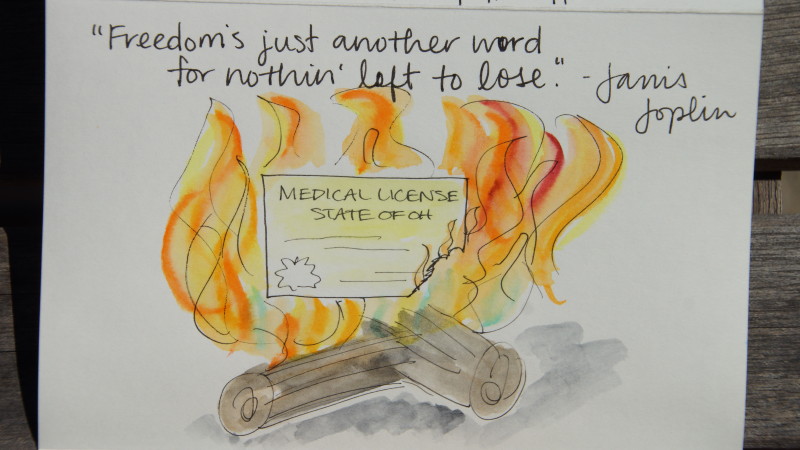
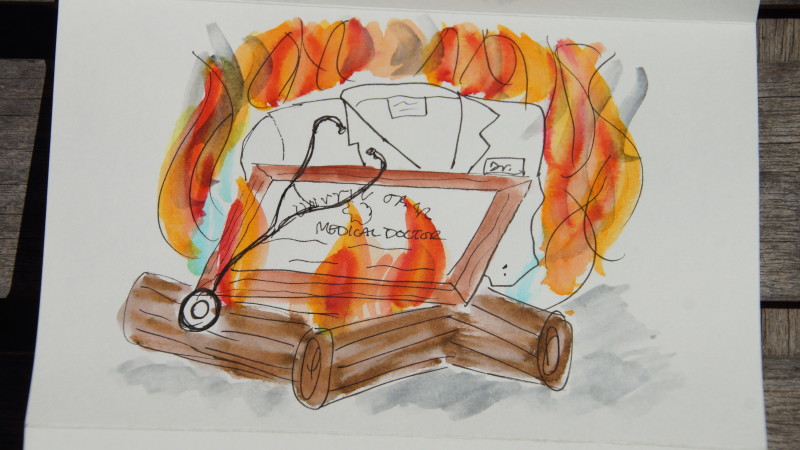 I recently returned from a week-long stay in Keystone, Colorado. I was there with a small group of physicians gathered to restore their voice to the practice of medicine.
I recently returned from a week-long stay in Keystone, Colorado. I was there with a small group of physicians gathered to restore their voice to the practice of medicine.
How I got there was through a series of events I can only call synchronicity.
What I felt was a profound feeling of "coming home".
I showed up as all of me, in full color. My role was to listen deeply and expansively, and I chose to record what I heard in visual form.
It was as if everything I practiced was serving me in my service to this gathering. Each morning I woke early and rode my rented bike along the many trails around Keystone. I listened to the Snake River winding its way through the trees. I inhaled with awe each time I arrived at the vista of Lake Dillon. I clawed my way up a steep hill only to be rewarded with the jackpot of a stunning view of Breckenridge and beyond.
I had learned from these past few years of practicing self-care that these morning steps were my fuel for being present and thinking creatively. I knew what to do - even in an environment away from my familiar surroundings at home - because I had practiced them into new habits. I had my biking clothes, I was comfortable riding, and all I had to do was explore new roads and read new maps.
I also had my daily sketching and art journaling practice in place, something I started only within the last two years. I have experimented with many different formats and media, and I am comfortable drawing outside. On this trip, I brought a small Moleskine Japanese album with accordion pages. It fit in my small travel purse or pocket, and I carried a pouch with pen, markers, and water brushes.
On my morning rides, I often sketched a scene quickly in ink, filling in color later in the day or in the evening. I noticed what I noticed. I took note of the stories I wanted to tell. And by the time I got home, there were three or four panels that needed coloring, which I completed within a few days.
New experiences, new people, new places -- all of these fuel my creativity and keep me inspired.
I am grateful for the daily practices I cultivate at home, so I am well-prepared to stay open when I'm on the road.
For a frame-by-frame caption story of my Keystone travel journal, see my post here.
For an in-depth reflection on the contents of the physician meeting and its impact on me personally, stay tuned!
All About Love - Unpacking the L Word
Why is "love" such a hot button word for so many of us? It seems we remain as divided with respect to this word as we are on so many other issues. There are "hopeless romantics" and there are "anti-Valentine's" party hosts. There are those who sprinkle the word "love" over every communication with strangers or friends, and there are those who use it sparingly, like precious strands of saffron reserved only for the finest occasion.
We never said the word "love" in our house, so during my childhood, I formed the belief that something was missing from my experience compared to the outer world of suburban midwestern America I lived in. We didn't talk like the characters on The Brady Bunch. The emotions expressed in my family were much more raw, more volatile, so close to the surface and not easily contained. The love I experienced was unrelenting, filled with the need to protect me from constant imminent danger, and would never let me off the hook.
Over a lifetime of accumulating ideas of what love is - from what I was told, from what I experienced, and from what I imagined - I decided, other-than-consciously, that it was not safe to love fully.
So I made up a definition of love that suited me, protected me, and preserved my belief in what was possible. I chose different outer images to imitate. I tried on many different outfits in my attempts to recreate safety in love. First, it was a white coat in medical school. Then, it was a pant suit that placed me at the negotiating table, equal to men. Next, it was high heels and feminine-looking skirt suits that projected a combination of power and approachability. Finally, I went barefoot and wore "spiritual" clothes (whatever that means).
These were symbols of the stories I made up about love. I believed I had to earn love by being a skilled professional, by being accepted by a prestigious institution, by measuring up to someone else's standard, by performing above all the rest, or by joining in special rituals. I believed, other-than-consciously, that how I chose to present myself on the outside actually represented how much I loved myself on the inside. So I placed my attention on my outer presentation, believing I could come up with the "right" thoughts or do the "right" things to create the outer world I desired, while continuing to avoid the depths I feared most.
The bigger experience of love I have recently awakened to, through the precise application of language, love and presence, has truly gone to the root of all - and that is consciousness. I finally touched and stayed in places I had avoided for so long. I was shown, by experience and not any concept, how to love my fear, love my pain, love my anger, and love even what I had given up on ever loving again. And to allow "loving what I feel" to transform each emotion into a petal of my heart's desires blooming in action. This was an experience of love bigger than my imagination could accommodate. It was beyond the box of my known reality.
Any thought pattern I chose in the past as a way to survive is no match for the power of being fully present and allowing the love contained in presence itself to shine its unrelenting light on my anger, pain, grief, and even apathy. I had believed that by not touching these feelings, I would somehow rise above them. In fact, I was unaware of the energy required to keep them suppressed and avoided. My buoyancy returned only after being willing to touch, stay, and love exactly what I had believed to be untouchable, unworthy of my attention, and unloveable. In the light of love, which I experienced as pure nonjudgmental and unflinching presence, everything I once thought I was not safe to feel became my love, expanded. I found myself forgiving people I was once convinced had really "damaged" me. I found myself spontaneously making lists of the things I love about my mom (how she never let me off the hook, how she unrelentingly saw my highest self already expressed in the world, and how she did it even though it was hard for her so much of the time).
I am now excited when I experience uncomfortable feelings, as they are a chance to expand my capacity for love. I get to love what I feel, and let my love grow. I now reclaim my love as the life force which has loved me into existence, expressing itself in every experience, feeling, and desire that has come through me. I AM my love. And I love my love.
I facilitate this awakening in my Eye Reading sessions and this is the level at which all of my work is offered. It is time to play a bigger game.
This month, you can join me in awakening to your greater depths of love in a free teleclass, "Renegotiating Love", a free Friday talk at Prajna Center in Belmont, "Receiving The Love That You Are", and my ongoing introduction to my program for physicians, "Live Your Medicine: Responding To The Evolutionary Wake-Up Call to Remember Your Love, Your Art, and Your Medicine".
Be Willing to Drop the F Bomb
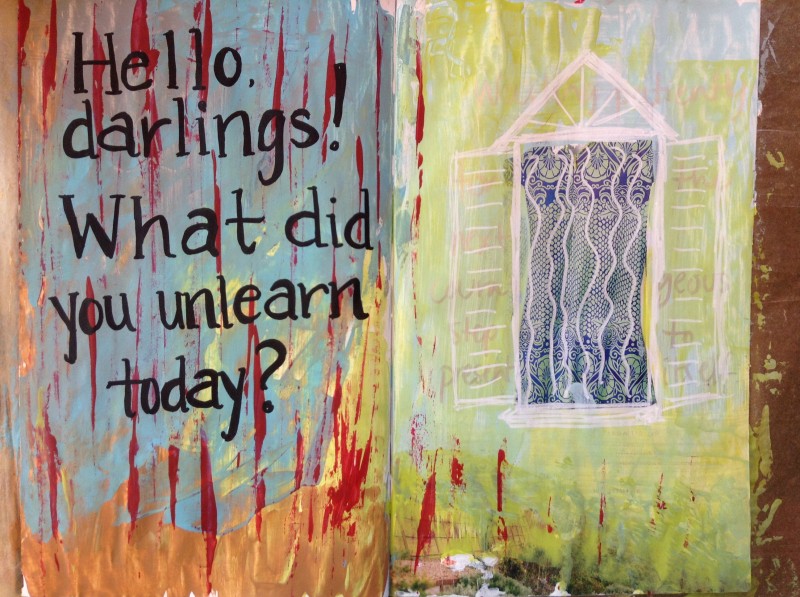 When I was a senior in high school applying to college, I remember one university had as its essay question, "What was your biggest failure and what did you learn from it?". I remember considering not applying to that school because I couldn't think of a failure to write about.
When I was a senior in high school applying to college, I remember one university had as its essay question, "What was your biggest failure and what did you learn from it?". I remember considering not applying to that school because I couldn't think of a failure to write about.
At the time, I was on the receiving end of a lot of attention and praise for never having failed (publicly at least). But now as an adult, I know the trap of living a life based on avoidance of failure. It's no success to have reached all the goals that have been set for you, to have checked all the boxes other people have laid out as important for you, and then to look in the mirror and not recognize yourself. Or to have your body screaming in pain or exhaustion.
Having been there and done that, I have rediscovered the vital importance of failure. Not "achieving" failure as an identity, but being willing to fail. I gave a workshop on Friday to a group of engineers, coaches, consultants, startup founders, and other change agents interested in how groups of people grow and learn. It was based entirely around sound, voice, and music improvisation - in other words, the most common fears of about ninety-nine percent of the population.
The name of the workshop was, "Play the Wrong Note: Daring Adventures in Learning, Failure, and Creativity". The title actually refers to a specific moment in my life when everything changed for me. Those four words - "Play the wrong note" - were the four most compassionate words ever spoken to me by a teacher. No one in a position of authority had ever said, "Lisa, I want to see you break the rules. And I'll help you." It turned out to be the most loving instructions I ever received, and the framework for an entire body of work.
It was about three months in to my sound healing training program. A weekend workshop dedicated to the art of improvisation. I thought I could just observe and let the others do this improvisation thing, which was clearly for "those people" but not me. So I hid behind the teacher with my violin tucked under my arm, hoping he would not see me or ask me to participate in this bluesy, jazzy jam that was happening all around me.
And, of course, at that very moment, he turned around and pointed right at me. "You! Solo!" he said.
I had no idea what to play. I wasn't into blues or jazz and had no reference point for what sounds to make. He could sense that I needed help so he said, "Play the wrong note."
My facial expression must have communicated the feeling I had, which was, "OK. But...which one?". There were an infinite number of wrong notes I could play. How would I know which one was right?
He smiled and took my finger in his hand, and moved it to a random place on the fingerboard of my violin. "Play that," he said gently.
I heard his instructions, but when I tried to play, my bow arm literally would not move. I was so hard-wired to play only the right notes - after daily practicing from age four - that my entire body would not allow me to play any wrong ones.
It was the perfect timing for me. I was ready. I had had a lifetime of good training, practice, and mastery. I was wired for success. But I had no wiring for freedom, fun, or failure. And in that moment, standing there, stranded, in the middle of a room with forty or so people making sounds, having a great time, and waiting for me to solo, I got it.
I could continue to avoid failure, or I could choose to grow into the unknown.
Later that day, in the same workshop, my violin case fell off its chair and onto the floor.
I took it as a sign and stopped avoiding the failures that were wanting to happen for me. I closed my violin school a little over a month later. I started practicing - first in the privacy of my own home, and using my voice, not my violin - making sounds that were all "wrong" to my trained ears. I started PLAYING again. Something I had not done in a long time, and maybe never on my violin.
The adventure that followed was a list of things I could never have planned for my life. I started playing only improvised music, in public, on a stage. I discovered hiking and backpacking. I went to the top of Half Dome and the bottom of the Grand Canyon. I started working at REI - the retail job I was never allowed to have as a teenager because I could earn more money teaching violin or staying home to practice. I won a gig as a gear tester and reporter for Backpacker Magazine, including a free trip to the Outdoor Retailer show in Salt Lake City. I discovered Thai massage and Breema bodywork, which led to traveling to three countries I would never have dreamed of visiting before - Bali, Thailand and Laos. And through my practice of these forms of bodywork, I traded massages for studio days with a couple of artist friends. And I discovered that I could play with paint. Which led to a daily art-making habit. Which has (so far, in the year or so that I've been doing it) led to a juried show, a new blog, and a whole lotta new art supplies in my house.
I could not have written these down on a bucket list because I would never have let my imagination run that wild. Until I was willing to Play The Wrong Note.
And not just once, in a workshop. It was about making a decision to bring the learning from that moment back to my daily life. To find ways to practice that willingness every time the opportunity came up.
It started with music. Being willing to play the wrong note in my personal comfort zone. And then it expanded. Not with planning but as a natural consequence of becoming familiar with the willingness to be "wrong".
So this is my soapbox.
Risk taking is necessary. Being open and willing to fail is necessary. Not knowing is necessary. And these skills are not taught in school. They are not the skills that get you straight A's. They are not the skills that make you look "smart". They are not the skills that earn you the proud distinction of being a Good Daughter (or Wife or Mother). They are not the skills that you use to fill out a college or medical school application. They are often not the stuff of polite cocktail party conversation.
They are the skills of the maverick. The rebel. The free thinker. The one who creates.
So no matter how long ago it was that you experienced your last failure - whether it was just this morning or decades ago or not at all - it is never too late to dive right in. Start practicing the F word.
Take it from a straight A student. Me.
Curious about my "Play The Wrong Note" workshop? Read this blog post or listen to the Creative Conversation we had yesterday about it.
And if you're ready to start practicing Fun, Freedom, and Failure with writing as improvisation, check out my brand new coaching program here.
Wishing You The Fun and Freedom of Being Willing to Fail,
Lisa
Exercise Your Write To Be Free
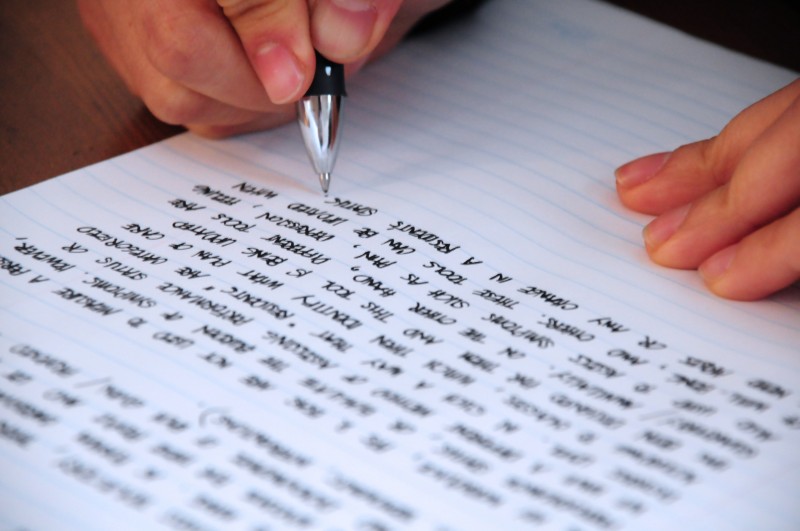 I rarely share client stories, but a recent experience is birthing a whole new way of working for me. I just finished a 30-day writing experiment with a physician client who is just starting out on a brand new path. Having already found the courage to leave his medical practice and head into the open space of the unknown, we worked on rekindling a secret dream he's held for a long time, maybe his whole life: writing.
I rarely share client stories, but a recent experience is birthing a whole new way of working for me. I just finished a 30-day writing experiment with a physician client who is just starting out on a brand new path. Having already found the courage to leave his medical practice and head into the open space of the unknown, we worked on rekindling a secret dream he's held for a long time, maybe his whole life: writing.
He always wanted to try writing, but never did because he had a belief it was too impractical and was no way to make a living. Yet he knew he had stories to share, and ones that would help others if he did.
I wanted to hear these stories myself. I was curious what touched him so deeply about his experiences in medicine. I knew that in hearing these stories, we could both experience a healing journey.
So I came up with this idea, which I had never done with a client before: a writing experiment. The assignment was to write daily for ten minutes a day, thirty days in a row. Then send that writing to me, which I read every day. Mostly we let the process run itself, but we had two phone conversations during the month, once to check in and then again to review the entire process.
I knew that a small, daily commitment done over a sustained period of time would lead to something. A new habit at the very least. An awakened sense of hope and creativity I envisioned as possible.
What I didn't expect was the vast territory we would cover in those ten minutes of daily writing each day. Not only did I learn from my client's deep minings that occurred from this type of reflection, but I heard accounts of key moments, important feelings, and long-held beliefs that it might have taken months to get to with traditional weekly phone coaching calls. In timed writing, you get to the heart of the matter quickly. You can try to dance around, squirm a bit, but the hand keeps moving and the clock keeps ticking, and something gets said that has juice to it, even if at the very end.
And when you have a curious, compassionate witness, who wants to hear more, and will ask you questions and deliver you the next prompt to inspire more writing, it unfolds with surprising beauty.
It was so beautiful that we are continuing the process for another thirty days, this time including a few additional daily and weekly practices like meditation and art-making (yes! eek! art!). And now, I want to offer this powerful experience to you.
First, here is the practice, which you can do entirely for free on your own. Form a group of friends and do this together. It could, in my client's words, be a "life-altering experience".
The practice:
- Choose a start date. Why not tomorrow?
- Choose a time and place you will do your writing every day for the next thirty days. Yes, you need to think about this in advance, or it will not happen.
- Choose a pen and notebook that you LOVE, and that you will use only for this writing practice. You can use the computer too if you must, but I highly encourage the use of pen and paper for this. There are enough reasons we are called to the computer, and not enough good reasons to go manual these days. Here's one.
- Get a timer. Most phones have a timer app. Or use a good old-fashioned egg timer or stopwatch or alarm.
- Set the timer for 10 minutes. When you sit down to write, you start the timer. When the timer starts, your hand starts moving across the page. You don't stop. You don't pick the pen up off the paper. You are not thinking. You are letting your hand move, letting it lead the process. You don't edit grammatical or spelling errors. Don't cross anything out. Just keep writing. Lose control. See what happens. Don't have a plan.
- When the timer goes off, you stop. That's it. Pick your hand up off the paper. Close your notebook. Go do something else. This is important, too. Give yourself an endpoint that is defined.
- The next day, repeat.
- And repeat again and again for thirty days.
The page serves as a mirror to our present state, in a beautifully unedited and raw form. We get to see inside ourselves in a way we probably don't look for on our own. Our minds are too busy arranging things. Or we're reacting or responding to something outside ourselves.
With this form of writing (which is influenced and inspired by several of my favorite creativity teachers), we come into contact with the reality of the present moment, and how raw and fresh and changing it is. With practice, we also begin to create a space for ourselves to witness what is. To be OK with whatever shows up on the page. To not always be meeting some idea of an expectation. To let go of an agenda and trust, even if only for ten minutes a day.
And all of this, again in my client's words, could lead to "a whole new world opening up".
You can totally do this effectively on your own as a practice. There are great books that speak to the depth of what this can uncover, and provide you with pages and pages of prompts to go far and wild.
But if you want to work one-on-one with me, receive weekly written responses to your writing (I am not an editor or a coach or a critic, but a supportive, curious listener who tells you when I want to hear more), and have two phone conversations during your thirty-day process (one brief check-in after week one, and another full-length conversation at the end), then I am offering the opportunity for a limited number of individual clients, starting October 15th.
I've learned this about myself during the past few years: I don't do online forums, and I don't do auto-responder emails. I thrive in one-on-one interactions. According to the online marketing experts, this breaks all the rules of becoming a rock-star millionaire business owner. But that doesn't faze me. I'm following the bliss of what I know to be an extremely potent process, which is in alignment with everything I know from experience to be valuable to the recovery of the soul.
Here's how to join me in October.
Surrender and Loving It 'Til You Know What It Is
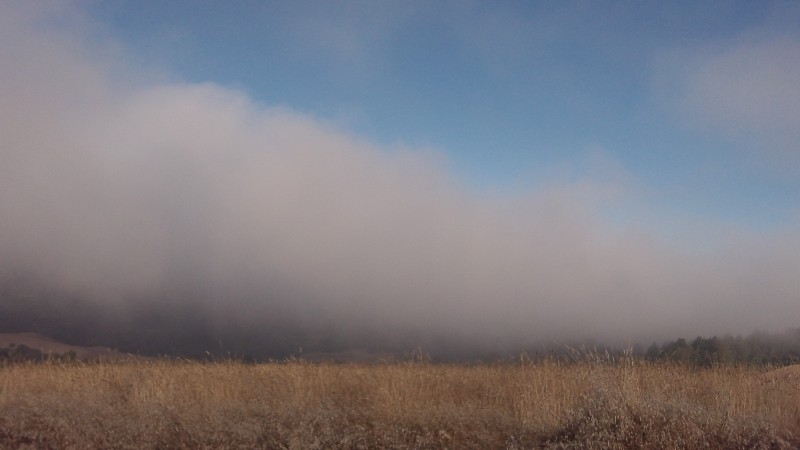 I am in a large group of women artists who have driven up to the ridge of a mountain range and then down a very windy road to a secluded artists retreat program in northern California. All I want to do is stare at the dreamy landscape, watching how the golden green hills go back and back and back, disappearing finally into a fog bank which hovers just above the sea in the distance. I want to watch as the wind blows, the fog clears, and the misty outlines of the hilltops begin to glisten in the midday sunlight. I want to sit and sketch it, and fill in the colors I am seeing, and try to capture the dreaminess, the haziness of it all, the lack of precise outlines which gives it that quality of mystery that makes me want to keep staring.
I am in a large group of women artists who have driven up to the ridge of a mountain range and then down a very windy road to a secluded artists retreat program in northern California. All I want to do is stare at the dreamy landscape, watching how the golden green hills go back and back and back, disappearing finally into a fog bank which hovers just above the sea in the distance. I want to watch as the wind blows, the fog clears, and the misty outlines of the hilltops begin to glisten in the midday sunlight. I want to sit and sketch it, and fill in the colors I am seeing, and try to capture the dreaminess, the haziness of it all, the lack of precise outlines which gives it that quality of mystery that makes me want to keep staring.
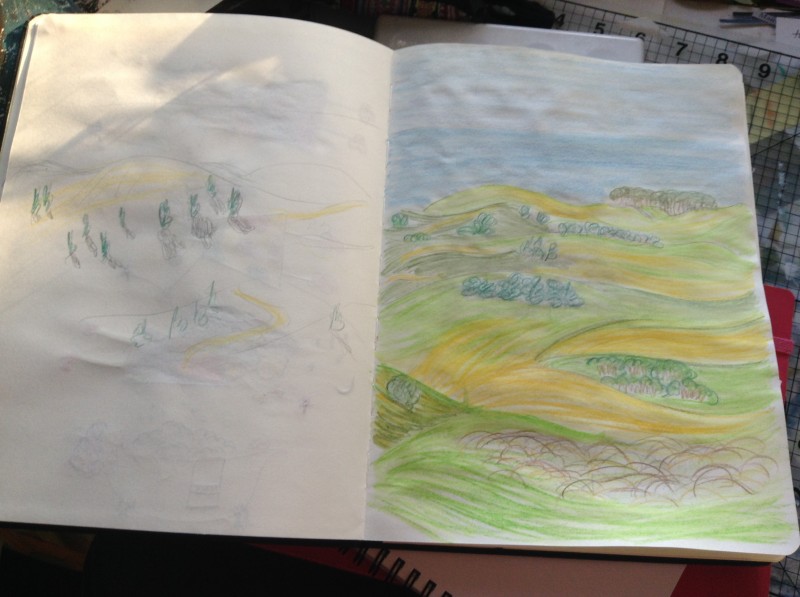
But we have a schedule. There are ranchers and herders moving us along in this schedule, ensuring that we are on time. I help myself to a large lunch - two servings each of lentil soup and kale salad with some fruit on the side. My idea of a perfect meal. But my stomach feels slightly full after all that, and I am ready to rest and digest.
Having forgotten the schedule momentarily, I’m jarred when it is announced that we now need to move into another room for a “movement activity”.
I take my time walking there, hoping those extra few seconds will give my digestive system time to bring the food down a little more.
By the time I join, the circle has been formed and all the women are bouncing lightly on their bare or socked feet. This being one of only 14% of artist residency programs in the country who have a fully spring loaded dance floor, shoes are not allowed.
Ann Swanberg is the leader. I had experienced her work once before in a large church, where she presented her improvisational approach to life in a humorous show. We kept bouncing - this was Ann’s method for keeping us out of our thinking minds and in some other realm governed by the moving, breathing body - and we did a whole host of games designed to get us to drop our personalities by acting silly and free.
What I noticed is that my recent experiences with becoming present were done in the stillness and silent meditative movement of the Breema Center. Somehow in that setting, where I was truly not a personality and there was absolutely no imperative to show up as entertaining in any way, I could feel my own bodily presence. In this setting where everyone was asked to do something silly, there was slight pressure to be “silly enough”. As if stillness would not have been accepted there. But I don’t know because I just flowed with the energy of the room.
One of the more silent and inward-turning exercises of the day did capture my attention. She called it “The Infinity Box” or “Loving It ‘Til You Know What It Is”. The instructions went something like this: Reaching into an imaginary box from which anything is possible, allowing the “Body First” to lead the improvisation, follow the shape your hands spontaneously take as you reach in. As they emerge from the imaginary box, just be with them. Don’t change them or manipulate them into what you think they might be. Just breathe with the shape, feel it.
"Love it ’til you know what it is."
It was fascinating to watch the different shapes my hands took on when I allowed them to. Fingers apart and curved, palms facing up. Fingers together, joined at the thumbs and index fingers. Palms cupped, joined together, facing up. And then waiting. Breathing. Feeling. An answer or image always emerged. But sometimes I had to stay with it longer than expected. The final one I ran out of time on. So I sketched it, and it is permanently imprinted in my bodily memory. I am still wondering what it is.
It reminded me of painting. How the creative practice for me is staying with something long enough to find out what it is. Not to give up. Not to decide in advance that something’s “never going to work”. So often when I have mustered the courage or audacity or love to stay with it, to keep going, to keep loving it, something else so beautiful and magical emerges right on top of it all.
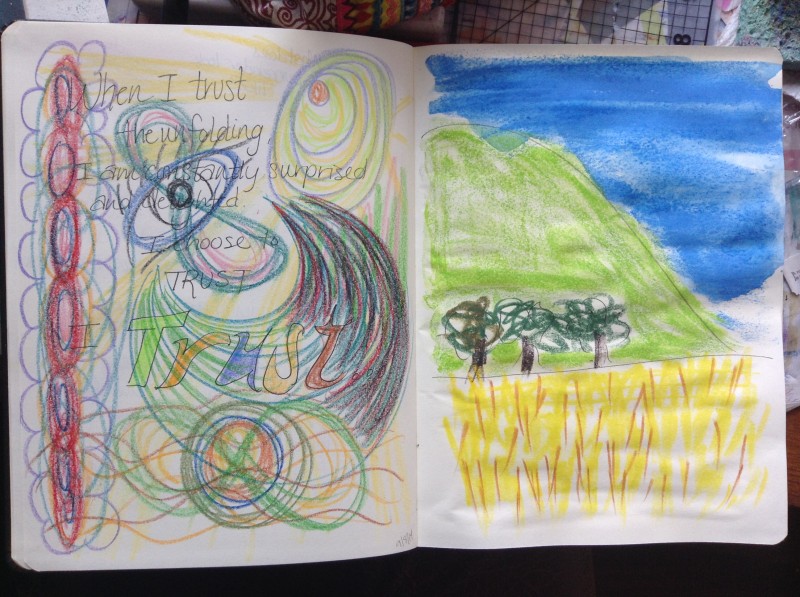
Chris Zydel sent out her newsletter yesterday too, and I happened to read all the way to the bottom. The article was about "Surrender". How surrender is not giving up or weakness or defeat. But rather a form of full presence. That in order to fully participate, there is surrender involved. As I write this, it occurs to me that the four “No…” principles from Breema touch on what kinds of surrender are involved - No Judgment, No Force, No Extra, No Hurry No Pause. Well that’s a lot to give up in order to get to presence! How often are we drowning in judgment, doing more than is needed, rushing around, or not acting because we feel stuck in hesitation.
Surrender is the sweetness of letting life lead. Of loving whatever life gives you until you know what it is. I am attempting to apply it to my body, my relationships, my work decisions, all of which I apply a certain amount of control, changing, and fixing to. I don’t really know the state of full surrender into acceptance. I am pointing towards it sometimes, but I haven’t sunk to the depths of that pool to say, “Huh. So this is it. I’d like to know how this feels. Really.”
Here’s what Chris had to say about surrender:
When a sunflower turns its face to follow the sun, that is surrender. When a seed planted in a rich soil breaks free of its encasement and pushes its way up to the light of day, that is surrender. When a wild mustang gallops wildly and joyfully across a meadow, that is surrender. When a baby tries to grasp a beam of light, laughing delightedly, that is surrender. When you look at a sunset and feel the peace of simply breathing in and out, that is surrender. When you enjoy a delicious meal, letting the flavors tickle your tongue, that is surrender. When you feel drowsy and begin to fall asleep, that is surrender.
In all these experiences you, or the horse or the sunflower are completely giving into what's right there in front of you. You are simply being in the present moment with what you feel drawn to do.
So in other words, surrender is something that happens daily, hourly, minute by minute in our lives. It's so very common and down-to-earth. It's in the most intimate fabric of our existence. And includes everything from the mundane to the ecstatic.
And tomorrow, with the start of the final Energy Gardeners' Club of the year, I am ready to apply the principle of Surrender. Making things happen is not about controlling in order to get what you want. Making is allowing.
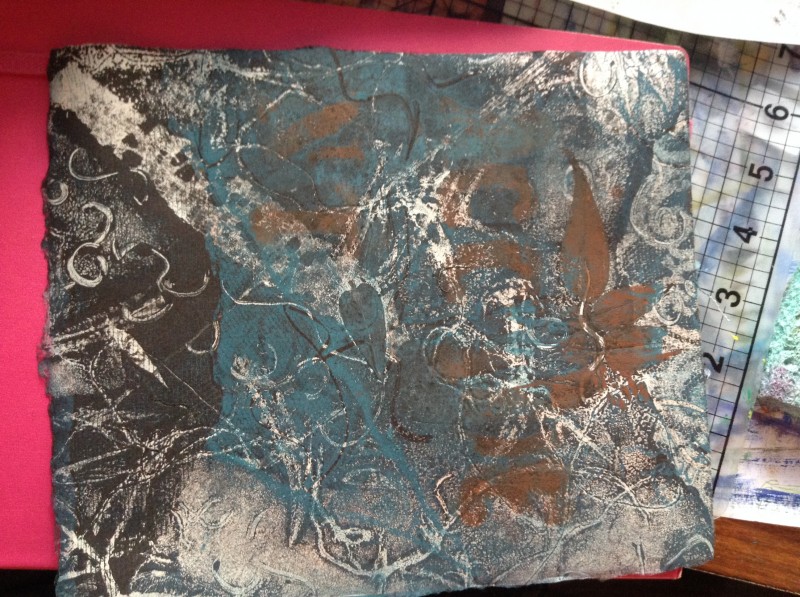
Falling Down To Earth...Lessons from "Gravity"
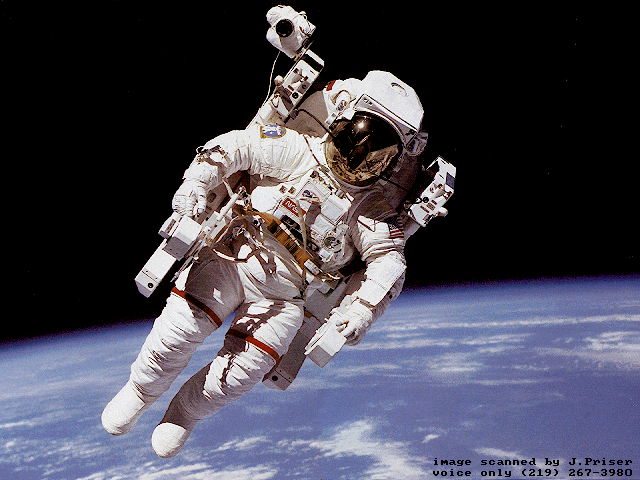 I saw Gravity this weekend. It was date night. Since we normally watch movies on Netflix in the luxury of our own living room, with the sunset and ocean behind our backs and the fire roaring in the fireplace, the trip through traffic and the ordeal of finding a parking space in a shopping mall made me expect a lot from this one.
I saw Gravity this weekend. It was date night. Since we normally watch movies on Netflix in the luxury of our own living room, with the sunset and ocean behind our backs and the fire roaring in the fireplace, the trip through traffic and the ordeal of finding a parking space in a shopping mall made me expect a lot from this one.
We decided to splurge on the 3-D version. We got a big bag of popcorn, and settled into the theater, which we had mostly to ourselves.
I was already filled with gratitude for my life on the coast after we set foot inside the neon shopping mall that contained the movie theater. At that moment, seeing the names of the food court vendors – none of which were familiar to me, feeling the fluorescence of everything, squinting at the brightness of the SALE signs in every store window, hearing the echoes and reverberation of the cavernous container of the space, I realized how long it had been since I’d shopped in a mall. When had that shifted? I recalled a time in my childhood when the only place to shop for clothes and shoes was the mall. It was also one of the main “hangouts” for kids who went out after school (of which I was not one).
I won’t talk too much about plot points here, but I want to list several of the “messages from the universe” that I feel are embedded in the movie. I’ll scramble them up so as not to have to give too much of a spoiler alert. But if you must see the movie first, I’ll warn you that I refer to some scenes in the text below.
1. We’re hurtling at light speed toward our destiny at all times.
2. There are two ways to go through our brief moment of time called life – light and floating and free, with laughter, presence, and acceptance, or tethered, struggling, thinking hard, constantly driving somewhere, not knowing where in particular.
3. As unlikely and miraculous as it was for the protagonist to arrive back to earth, her journey is a metaphor for the set of unlikely circumstances that collide to create any individual life on earth, and both are equally miraculous.
4. There are two ways to meet our inevitable demise of death – in awe and wonder, with a light heart, and fully present, or with fear and regret. The way you die is the way you live. Start living.
5. To continue living, you must continuously jettison the parts that no longer serve you. Even though at one time in the past they were essential to your survival, these parts can be exactly what’s holding you back right now. Keep letting go.
6. Sometimes you find yourself on the end of a tether, getting whipped around, believing you’ve been rescued or saved. While you’re technically alive, the ride may feel nauseating, and you’re never permanently protected by what’s on the other end of the tether.
7. Use what you have, do what’s in front of you, remember what you know, and start from where you are.
8. Be grateful for your mind, and remember to use it to serve your heart’s desires, not replace them.
9. Everything can be blown to bits, and you can be one of those bits. You can experience your own rebirth by falling back down from (your head) space into the watery womb of mother earth. You can dive deep, find air, reach land, express gratitude, and then finally find your own legs. This is the story of human evolution…from star stuff to dirt, that’s what we all are: miracles.
10. Sometimes we need to journey far, far away in order to find our way back home.
